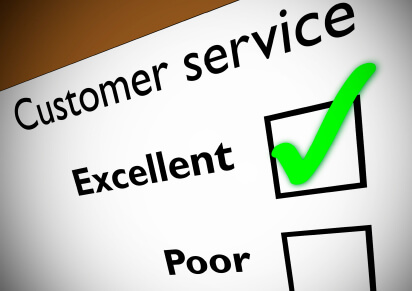
“Treat the customer like a king.”
“The customer is ALWAYS right.”
These are just some of the basic principles that first come to mind whenever we talk about customer service, specifically, handling customer complaints.
No matter how good or bad the experience was, your client’s feedback is important to any company of any industry this will be the source of information on how you can not only improve on your products and services, but also gain knowledge on how to make things better and more valuable. Find out what to stop doing, what you should start doing, and what you should continue doing by keeping in mind these guidelines whenever you handle customer complaints.
When dealing with complaints, especially with upset customers, remember these tips.
Know Who You Are Talking To.
Like in any task, you have to know your scope and where to focus. The most important thing in customer service is getting to know your customer. You can do this by getting their profile and order history.
Besides their most basic data that you have on file such as the date of purchase and the delivery address, you should also try to discover the story behind complainant. How do they describe the problem? How familiar are they with the technicalities? Are they familiar with the parts and with electrical circuitry? Or do they have no clue about what to do?
By taking note of these pieces of information and context clues, you can provide more useful information. Leverage on the simple facts about your customer and you will know what next steps to follow in a particular direction.
Listen and understand.
Always listen to the customer. They have complained for a reason and it is important to understand why they are complaining. This will tell you their most immediate concern related to the breakdown of the unit.
More often than not, the customer will tell you about the symptoms of the problem but will not know the root cause of the problem. They will tell you that the chiller is not cold enough, or that it is not cooling at all. Ask probing questions. Try to identify the root cause of the problem.
In most cases, you can identify this by performing some simple debugging procedures. Is the device connected to a power source? Is it turned on? Is the power indicator lit? Has there been a power interruption or fluctuation?
When the root cause of the problem is identified early, the repair team will be able to address the issue more effectively since they will be able to bring the proper tools needed. For devices that are no longer under warranty, this will save the customer from schedule one day for a diagnostic check-up and another day for the actual repair. This saves time and money for the company and for the customer.
It’s never late to say sorry.
Don’t be afraid to apologize for the mistake. Many customers are simply looking for an apology and acknowledgment of their complaint. By being honest and sincere, you are acknowledging that there is a problem. Then, you can focus less on the emotional aspect of the problem and focus more on being proactive at looking for the proper solution.
Seek the best solution.
Support comes in a variety of shapes and sizes. Sometimes it’s simply listening to them, and other times it means exchanging a defective item for a new one. Let them know if the item is under warranty, so that you can give them a cost-effective solution. If the issue has been or can be repeated, make the necessary changes, so you do not receive another complaint.
Follow up with the customer.
Once you have gone through the first five steps, make sure to follow up with them to make sure that they are satisfied with the solution and that you have taken care of their concern. This will show them that you are intent on making sure that things are now good for them and that you care about maintaining your relationship.
Learn your lessons.
Above all, use customer complaints as stepping stones to learn about potential flaws in your system. Identify the problems that have a pattern of happening often and create an action plan to minimize the probability of it from occurring. Maybe a regular preventive maintenance schedule should be set up with the customer. Or maybe you should reach out to clients more often to remind them about proper maintenance and usage of the unit. Choose an action plan that will be effective for your customers.
Remember, the cost to get a new customer is tremendous. The expense of losing an upset customer who tells others about the experience is far too high of a price to pay. By taking care of your customer, you are ultimately taking care of yourself.


Comments are closed here.